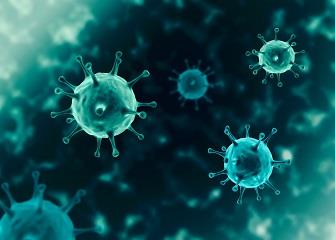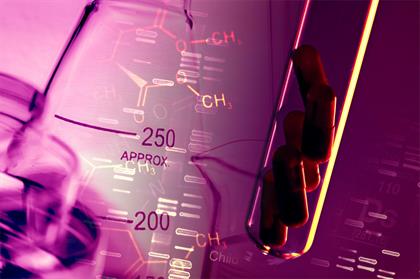
The addition of the linker should not induce aggregation and needs to ensure acceptable PK characteristics, while limiting the premature release of the payload in plasma and enabling the effective release of active molecules at the targeted site. These linkers can be divided into cleavable linker and non-cleavable linker.
ADCs based on non-cleavable linkers must be internalized and the antibody needs to be degraded by lysosomal proteases to release active molecules. Many non-cleavable linkers have been explored during the ADC development process, the most representative one is N-succinimide-4-(N-maleimidemethyl) cyclohexane-1-carboxylate (SMCC), which used by Kadcyla.
The catabolism of this structure causes Lys-SMC-DM1 to become the main tumor metabolite. Furthermore, drugs linked to this linker usually cannot exert bystander effect because the released catabolites are less permeable. Current research mainly focuses on cleavable linkers. The use of cleavable linkers is equally feasible for both internalized and non-internalized ADC designs, because the release is triggered by the nature of the cleavage site (lysosome and/or tumor environment). The linkers can be divided into enzyme-dependent and chemical-dependent.
Chemical-dependent linker
The linker with disulfide bond is nucleophilic attacked by thiols to release the active payload. Although the reduction form of human serum albumin (HSA) in plasma is the most abundant thiol, it has poor reactivity to macromolecules. The cytoplasm also contains high levels of glutathione (GSH), which is a tripeptide containing sulfhydryl groups that easily reacts with S-nucleophilic protein. The difference in GSH concentration in blood (micromolar range) and cytoplasm (millimolar range) and the oxidative stress caused by cancer cells contribute to the preferential drugs release in cancer cells. Linkers containing disulfide bonds are mainly related to Maytansinoids payloads. The reactivity of disulfide bonds can be adjusted by steric hindrance: α-methyl substitution significantly affects the reduction rate and resistance to thiol-disulfide bond exchange. For example, the best anti-tumor activity of SPDB-DM4 was obtained by substituting the linker of SAR-3419 with geminal dimethyl.
The hydrazone linker shows pH-dependent stability, which is stable at neutral pH and is hydrolyzed in acidic medium (endosome pH<6, lysosome pH<5) to form corresponding ketones and hydrazines. This method has been successfully applied to IMMU-110 containing a cleavable acylhydrazone linker, which is formed by the reaction between hydrazide of 4-maleimide methylcyclohexane-1-carboxylate (MCC) and ketone of Adriamycin. The hydrazone linker is also frequently used in the Calicheamicins payloads. In this case, the release is triggered by two-step activation process, that is, the acid-sensitive hydrazone is hydrolyzed and the disulfide bond is reduced by GSH to cyclize the sulfhydryl intermediate. This linker has been used in the marketed Mylotarg and Besponsa, but their stability in plasma is not as expected and not as attractive as other cleavable linkers.
Enzyme-dependent linker
To limit the release of the payload before internalization and thereby prevent or minimize the degradation outside the target cell, the protein component of lysosome becomes a reasonable place to find enzymes that can degrade ADC with high concentrations.
Cathepsin-B
Cathepsin B is a cysteine protease that exists in the late endosomes and lysosomes of mammals, and is also overexpressed in many cancer cells. Initially, a cleavable dipeptide was used as a cathepsin B substrate as a prodrug of Doxorubicin. This work established the dipeptide portion of SAR: the P1 position requires a hydrophilic residue (citrulline or arginine). Acid), while the lipophilic residue at the P2 position enhances plasma stability (phenylalanine, valine or alanine). Furthermore, a self-degrading spacer is introduced to promote the entry of enzymes, thus limiting the steric hindrance of the payload: p-aminobenzylcarbamate (PABA) spontaneously 1,6-eliminates in acidic media and releases carbon dioxide, p-azaquinone formamide and Adriamycin. Finally, this discovery transferred from the prodrug to the ADC field, which proved the antigen-driven cellular activity of Val-Cit and Phe-Lys dipeptide linkers.
Val-Cit dipeptide is the most commonly used cleavable linker in antibody-drug conjugates. There are currently as many as 25 molecules in the clinical stage, possibly due to its overall good plasma stability, release behavior and chemical towability. The two approved ADC drugs (Adcetris and Polivy) both use the same linker mc-VC-PABC, which contains a maleimide spacer, a standard Val-Cit dipeptide sequence as a cathepsin substrate and PABC self-degrading spacer. Val-Ala dipeptide is also widely used, of which seven molecules are in clinical stage. The fastest progress is Loncastuximab tesirine, which includes a pegylated spacer to balance the lipophilicity of the payload SG3199 belonging to the PBD dimer family. Studies have shown that it is difficult for Val-Cit to achieve high DAR due to precipitation and aggregation. In contrast, the Val-Ala linker allows DAR up to 7.4 with limited aggregation (<10%). Compared with Val-Cit, Val-Ala is less hydrophobic, which explains why this linker excels in lipophilic payloads (such as PBD dimers). The Val-Ala linkers of the seven clinical candidate ADCs are all linked to the PBD.
The tetrapeptide Gly-Gly-Phe-Gly shows all the characteristics of a stable and effective cleavable linker, which is used in the ADC drug Enhertu who is already on the market. Enhertu is a plasma-stable ADC with DAR of 7.7. It undergoes protease degradation in the lysosome and releases DX-8951f, which is a potent topoisomerase I inhibitor derived from exatecan. Since the linker does not contain solubilizer, achieving such a high DAR is very impressive because it contradicts widely established principle. That is, high DAR conjugates may have poor pharmacokinetic characteristics. The self-degrading spacer used here is a simple and compact semi-amination instead of the PABC used in Val-Cit linker.
Phosphatase and pyrophosphatase
Like cathepsins, pyrophosphatase and phosphatase are also hydrolases that are selectively expressed in lysosomes. In 2016, Merck’s researchers designed a linker containing phosphoric acid and pyrophosphate to match the cathepsin B-sensitive Val-Cit-PABA to deliver glucocorticoids: the phosphate/pyrophosphate was partially bound between the self-degradation spacer PABA and payload. After internalization, the payload can be released in the order of cathepsin B, self-degrading spacer and phosphatase (n=1). For pyrophosphate (n=2), another step involving pyrophosphatase may be required. The advantage of this hydrophilic and permanently charged group is solubility, which can not only be bioconjugated with lipophilic glucocorticoid derivatives, but also promote the ADC purification. The residual linker in ADC is less than 0.10%. ADCs containing phosphoric acid and pyrophosphate are both active in vitro.
The same team of researchers at Merck also developed a unique pyrophosphatase-based linker for releasing hydroxyl-containing payloads dexamethasone and fluticasone propionate. In addition, the nature of the hydroxyl junction is critical for effective release. The primary alcohol of dexamethasone works well, while the more hindered secondary alcohol of fluticasone requires an acetal spacer to achieve acceptable release. Both ADCs show good stability in vitro and have strong activity on tumor cell lines.
β-glucuronidase
β-glucuronidase is a kind of glycosidase that catalyzes the hydrolysis of β-glucuronic acid residues and is highly expressed in lysosomes and tumor stroma. Researchers in Seattle genetics published a pioneering work in 2006. The anti-CD70 ADC uses a linker containing glucuronic acid, which is attached to a self-degrading spacer. This linker exhibits low levels of aggregation, high plasma stability, and strong in vivo efficacy.
The linker is also applied to other amine-containing payloads through an additional dimethylethylenediamine (DMED) self-degrading spacer, such as Camptothecins, SN38, Duocarmycins, and Matrine. The release sequence is from the hydrolysis of β-glucuronic acid to the self-degrading spacer. Another cyclization reaction of DMED occurs spontaneously to form 1,3-dimethylimidazolin-2-one and finally release the hydroxyl-containing drug. Due to the hydrophilic nature of the linker, this technology makes it easier to prepare ADCs with DAR of 8 compared to cathepsin-sensitive linkers.
β-galactosidase
Recently, an ADC using β-galactosidase cleavable linker was reported, which contains a PEG10 spacer. The spacer was replaced by nitro group to improve the self-degradation rate. Analogous to the β-glucuronidase linker, its dissociation mechanism involves the hydrolysis of β-galactosidase moiety, which imparts hydrophilicity to the chemical precursor. Another advantage is that β-galactosidase only exists in lysosome, while β-glucuronidase is expressed in lysosome and the microenvironment of solid tumors. Researchs indicated that in the context of anti-HER2-ADCs releasing MMAE, ADCs containing β-galactosidase linkers were more effective than T-DM1 in vitro and in vivo.
Sulfatase
Recently, a linker for sulfatase cleavage has emerged. Sulfatase is overexpressed in several cancer types and show potential selectivity. The study involved anti-Her2 antibodies with MMAE as the payload. Compared with the classic cleavable Val-Cit and Val-Ala linkers, the sulfatase linker showed similar efficacy to Her2+ cell lines.
Leave a Reply
Related Products
You Might Like Also

Lipids Used in COVID-19 mRNA Vaccines
The COVID-19 pandemic has killed millions of people. Vaccines certainly are the most outstanding ways to prevent major diseases and death, though they haven't eliminated infections. At present, the most effective vaccine is the mRNA vaccine developed by Pfizer-BioNTech and Moderna. Before that, mRNA technology stopped in the lab phase. Read More

Mechanism of Action of Paclitaxel
Paclitaxel is a natural anticancer drug with the molecular formula C47H51NO14. It has been widely used in the clinical treatment of breast cancer, ovarian cancer, and certain head and neck cancers, as well as lung cancer. Its novel and complex chemical structure, extensive and significant biological activity, unique mechanism of action, and scarce natural resources have gained immense favor among botanists, chemists, pharmacologists, and molecular biologists, making it a prominent anticancer star and research focus in the latter half of the 20th century. Read More

Fermented Raw Material for Cosmetic Skincare Product
The cosmetics and skincare industry is constantly evolving and a recent trend that has emerged is the use of fermented ingredients in skincare products. Fermentation is a microbial metabolic process that has been used for centuries in food and beverage production, and now it has been extended to the cosmetic industry. Read More

Hypoglycemic Functional Factors in Natural Products and Their Mechanisms of Action
Diabetes is a common clinical disease, and with the improvement of living standards, an increase in the number of obese people, and the intensification of aging populations, the incidence of diabetes is increasing year by year. Read More

Nanobodies Definition, Structure, Advantages and Applications
Nanobodies are the smallest functional single-domain antibodies known to be able to stably bind to antigens, and have unique structural and functional advantages. The molecular weight of nanobodies is only 12-15 kDa, which retains the antigen binding ability of traditional antibodies. However, nanobodies have higher solubility and stability, and have unique advantages in biological function and biochemical characteristics. Therefore, nanobodies have shown good control effects in disease diagnosis, cancer and infectious diseases. Read More

New Technology to Promote Drug Development-AI Technology
For a long time, the research and development of each new drug has faced the challenges of high cost and long cycle. In response to these challenges, major pharmaceutical companies have shifted from targeting common diseases to developing drugs for specific diseases. At the same time, these companies are constantly looking for new technologies for new drug development, such as high-throughput screening technology, DNA encoded chemical library, computer-aided drug discovery, and artificial intelligence. Read More










